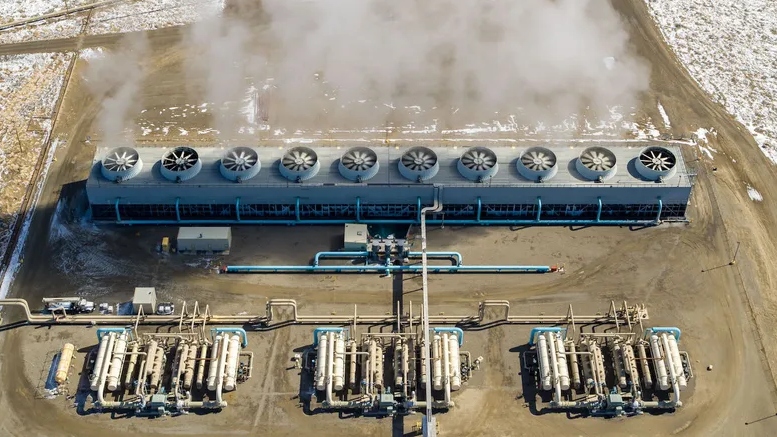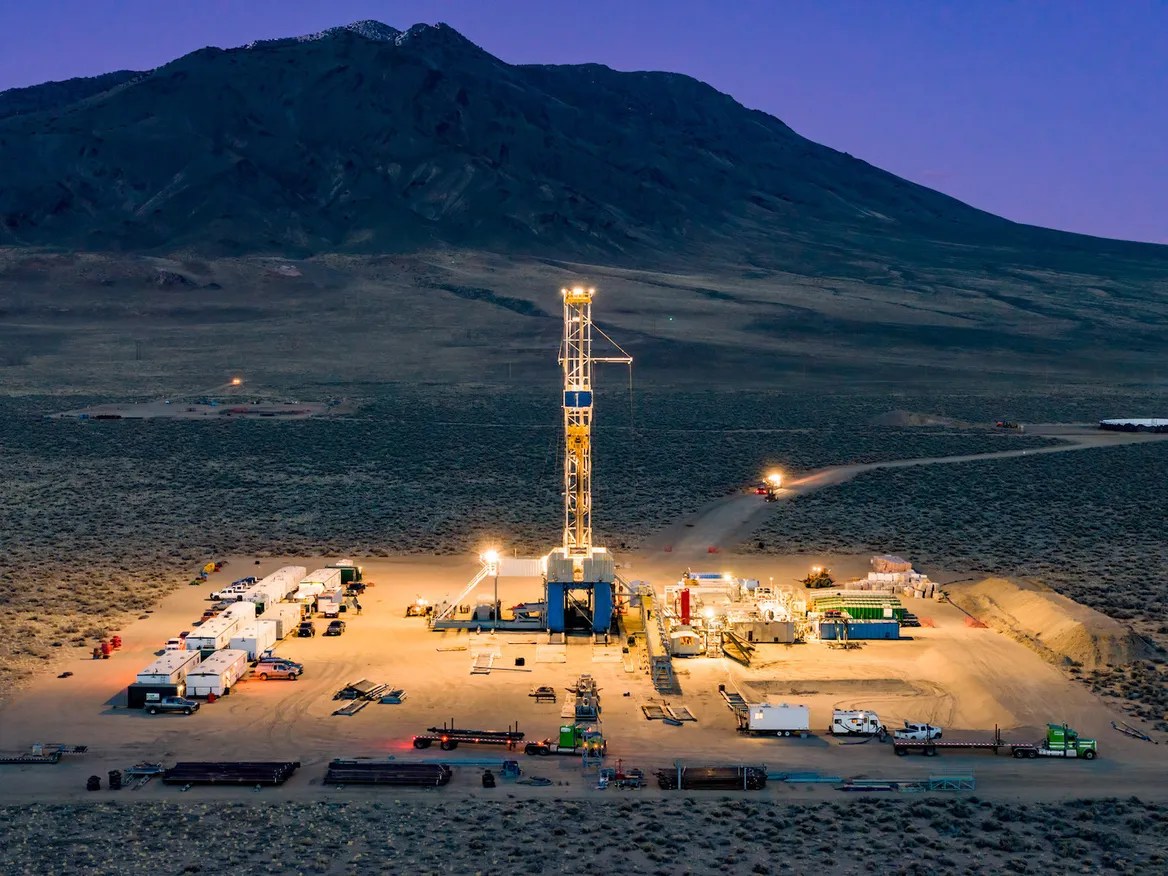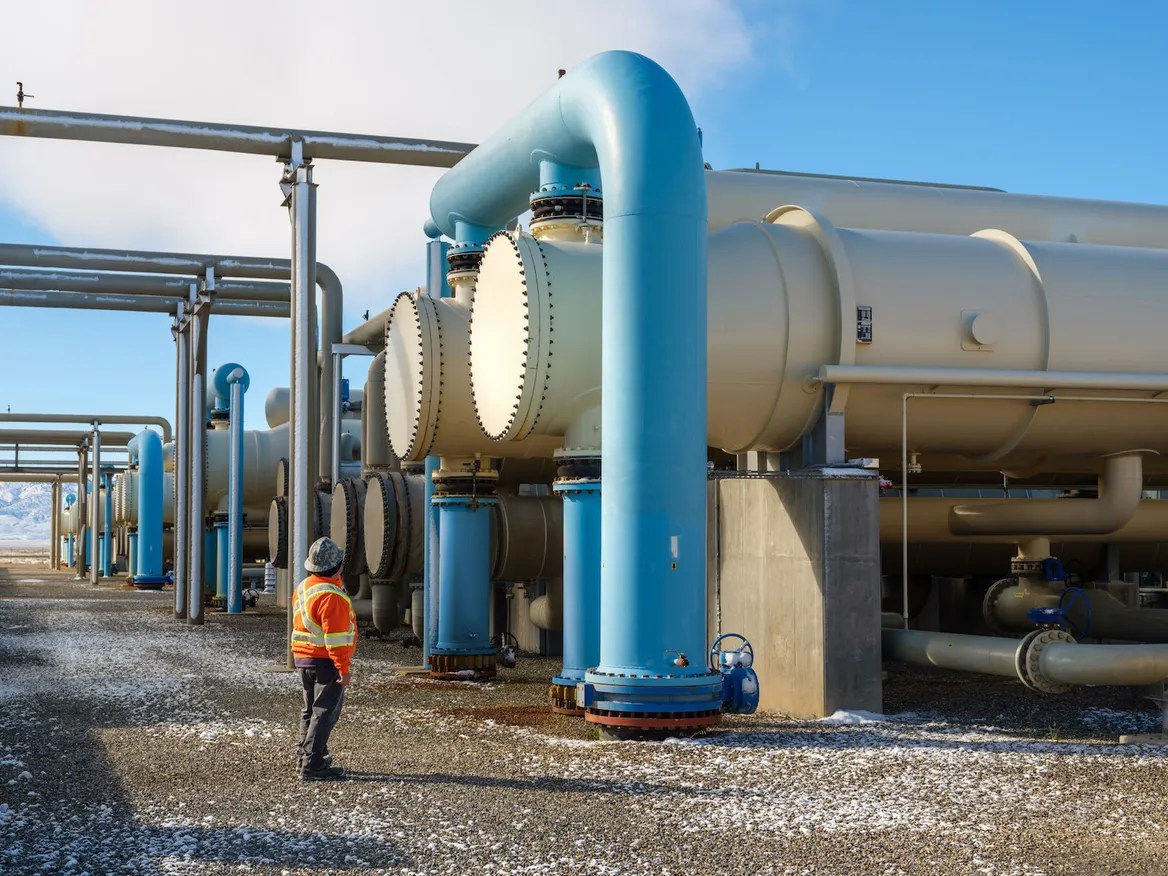
This story was originally published by Canary Media.
A next-generation geothermal plant backed by Google has begun sending carbon-free electricity to the grid in Nevada, where the tech company operates some of its massive data centers.
On Tuesday, Google and geothermal developer Fervo Energy said that electrons began flowing from the first-of-its-kind facility earlier this month. The 3.5-megawatt project, called Project Red, now supplies power directly to the Las Vegas-based utility NV Energy.
The announcement comes more than two years after Google and Fervo signed a corporate agreement to develop the “enhanced geothermal” plant. Unlike conventional geothermal plants, which harness heat found near the Earth’s surface, Houston-based Fervo uses advanced drilling techniques to access resources that are deeper or harder to reach than hot springs or geysers.
The completion of the pilot project is a significant step in the growing global effort to harness the Earth’s heat.
In the United States, geothermal energy provides only about 3,700 megawatts (3.7 gigawatts) of electricity, or 0.4 percent of total US electricity generation last year. But according to the US Department of Energy, geothermal energy can potentially provide 90 gigawatts of firm and flexible power to America’s grid by 2050 — assuming improved systems like Fervo’s catch on as a widespread renewable energy option.
Fervo’s project has a relatively small capacity: enough to power about 2,600 American homes simultaneously. Still, that’s more electricity than any of the world’s 40 enhanced geothermal systems have previously achieved, according to the company.

Google said it signed the agreement in May 2021 as part of a larger strategy to reduce its dependence on fossil fuels. The previous year, the search engine giant set a target to operate all of its power-hungry data centers and office campuses worldwide at “24/7 carbon free energy“by 2030, A goal this requires not only the purchase of renewable power, but also to accelerate the development of innovative energy technologies.
“When we began our partnership with Fervo, we knew that a first-of-its-kind project like this would require a wide range of technical and operational innovations,” said Michael Terrell, Google’s senior director of energy and climate. , written in November. 28 blog post.
“The result is a geothermal plant that can produce 24 hours a day [carbon-free energy] uses less land than other clean energy sources,” he said, adding that Google “worked closely with Fervo to overcome obstacles and prove that this technology can work.”
Google declined to share financial details about its deal with Fervo or the cost of the electricity Project Red produces.
Drill deep for clean energy
Geothermal resources are available almost everywhere underground, representing a potentially large supply of clean electricity and industrial heat. Yet most of those resources are too deep or technically complicated to reach cost-effectively using traditional methods.
Fervo, which has raised more than $180 million since 2017, is below dozens of companies in the US and worldwide striving to develop easier and cheaper ways to unleash this geothermal potential.
The startup uses horizontal drilling techniques and fiber optic sensing tools sourced from the oil and gas industry. Technicians create fractures in hard, impermeable rocks found far below the Earth’s surface, then pump the fractures full of water and working fluids. The super-hot rocks heat those fluids, which eventually produce steam that drives electric turbines. The idea is to create geothermal reservoirs in places where natural resources are not available.

Courtesy of Fervo
In recent years, enhanced geothermal projects have been shut down in a handful of other countries after they triggered earthquakes and rattled surrounding cities. Since then, companies have stepped up efforts to monitor and mitigate induced seismicity. Fervo said it has adopted a protocol developed by DOE to prevent seismic events from being triggered at its project sites.
The startup began drilling in Humboldt County, Nevada in early 2022. Project Red was initially expected to be a 5-megawatt facility that would come online last year.
At the geothermal site, two wells reach 7,700 feet deep and then connect with horizontal pipes that run about 3,250 feet long. Fervo’s team flows fluid into the project’s artificial reservoir, where the fluid can reach temperatures of up to 376 degrees Fahrenheit. In July, Fervo announced that it was successfully completed a full-scale well test in Nevada that confirmed the commercial viability of its next-generation technology.
About four months later, its first power plant is officially up and running.
“We did what we wanted to do,” Sarah Jewett, Fervo’s vice president of strategy, told Canary Media in an email.
Through the agreement with Google, “We have proven our drilling technology, established Project Red as the most productive enhanced geothermal system in history, and delivered carbon-free electrons to the grid at a time when competing clean, firm energy developers have struggled to carry out their projects,” she said.
To boost America’s geothermal capacity, the DOE has set a goal of reducing the cost of power from improved geothermal systems to $45 per megawatt-hour by 2035 — a 90 percent drop from today’s prices. Fervo currently produces power at a “significantly” higher cost than the DOE’s target, Tim Latimerthe company’s CEO, told Utility Dive in July. Still, he said the startup is still on track to reach $45 per MWh in the coming years as it scales its technology.
On that point is Fervo already started on a 400 megawatt geothermal power plant in Beaver County, Utah, called Cape Station. Fervo this summer began drilling the first of what will become 100 geothermal wells for the project, which is expected to begin providing 24/7 electricity to the grid in 2026 and reach full-scale production in 2028, Jewett said.
Google, for its part, said it would continue to work with Fervo and other companies to accelerate the commercialization of advanced clean energy technologies. In September, the tech giant formed a partnership with Project InnerSpace, a nonprofit organization that aims to expand the use of geothermal energy worldwide. Google said it will lend its data and software capabilities to develop a tool for mapping and assessing global geothermal resources.
“For geothermal energy to grow over the coming decades, we need major players with global scale and breakthrough technology solutions focused on this massive clean energy source among us,” said Jamie Beard, executive director of Project InnerSpace. earlier statement about the Google partnership.




